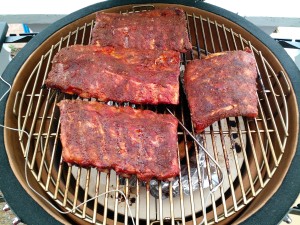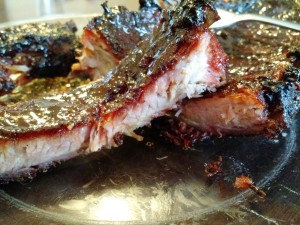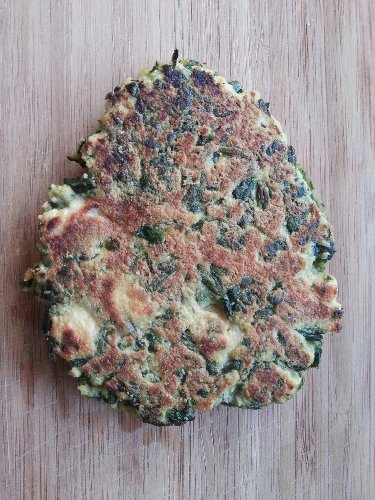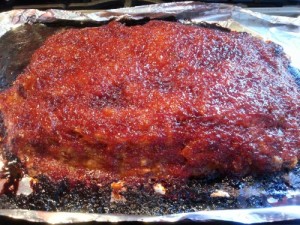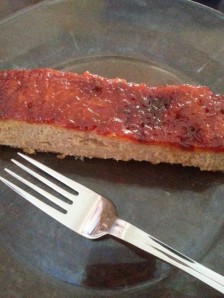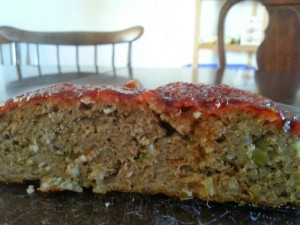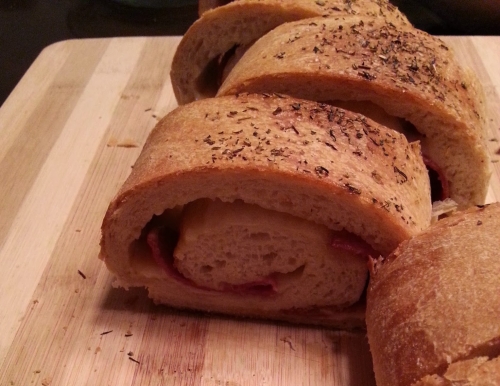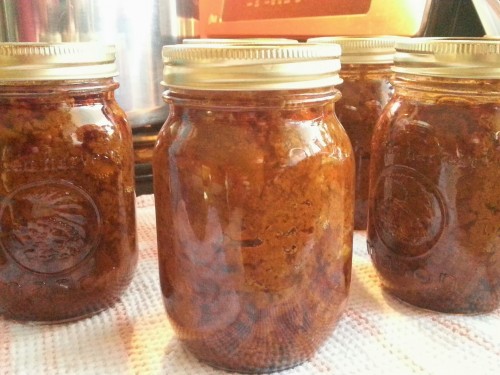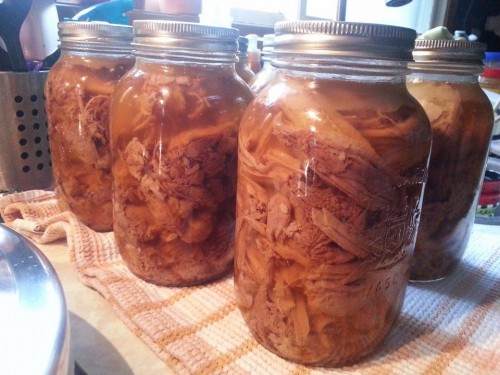
A delicious slice of meatloaf.
During the summer months, my husband will do almost anything to avoid using the oven (or the stove, actually). Generally this works out in my favour, since he’ll happily head out to the deck and BBQ up some dinner for all of us. But after picking up my Instant Pots and realizing that they contained heat very well, I started thinking about how easy it would be to cook ‘oven’ foods without heating up the entire house.
Like meatloaf.
Now, there are some challenges with cooking meatloaf in the Instant Pot. First, the very fact that it’s being pressure cooked means there’s no browning of the meat. Second, the glaze won’t get all glaze-y without the oven. Are these important things? I decided to give it a shot while I was on vacation this week and see what happened.
I used my favourite meatloaf recipe: Thai Turkey Meatloaf from Budget Bytes. (Seriously, it’s the best meatloaf I’ve ever eaten.) I stuck to the recipe without making any changes to the ingredients – but I did, obviously, make changes to the cooking process.
I have to say – I would happily feed this to my family (it was DELICIOUS) but I’d hesitate to serve it to guests because it really, really doesn’t look great.
Anyway, if you’re feeling like you want to experiment, here’s what I did:
- After mixing all the ingredients together, use thick tinfoil to create a ‘pan’ for the meatloaf to sit in while cooking. I made mine round (like the inner IP pot) and about 4 inches tall on the sides.
- Put the meatloaf into the ‘pan’ you made and set it on top of the trivet. Use tinfoil to make a sling, if you need to, unless your trivet has tall enough handles that you can easily pull it out after cooking. (The trivet that comes with the IP is too short to easily grab – so I add a handle onto it with the foil. There are many creative ways to get stuff out of the IP!)

Homemade ‘pan’ with raw meatloaf in it!
- Add 2 cups of water to the bottom of the IP. Place the trivet in, along with the ‘pan’ of meatloaf.
- Put the lid on the IP, set it to ‘sealing’, and set it to ‘manual’ for 20 minutes. When the timer finishes, allow for 10 minutes of NR and then QR the remaining pressure.
- Check the internal temp of the meatloaf – it should be 165F for ground turkey. If it’s finished, great! If not, put it back into the IP, seal the lid, and do another 5-ish minutes of cooking. QR this time and re-check the internal temp of the meat.
- Take the meatloaf out and marvel at how doughy, grey, and unappetizing it looks. This is what happens when you pressure cook meat!
- Put the meatloaf onto a baking sheet, cover it in glaze, and put it under the broiler until things are looking better – the glaze should bubble and get sticky, the meat should brown a bit. This can take anywhere from 5 to 10 minutes, but keep a close eye on it so it doesn’t burn.

Seriously, this doesn’t look appealing to me.
- Remove from the oven, slice it like a cake (?) and serve! It’s absolutely delicious despite appearances – and the kitchen barely got warm in the process of making it. Win-win!


